nVidia GeForce 9600 GT Review
nVidia GeForce 9600 GT
nVidia's latest mid-range graphics card arrives and it's hitting a busy market space. Can it shine through?
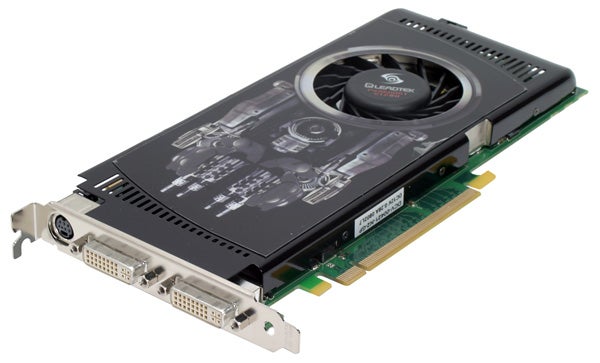
Verdict
Key Specifications
- Review Price: £129.20
It’s fair to say that nVidia’s been ruling the roost over the past year or so when it comes to the high-end of the graphics card market. Only recently has ATI been able to offer up a solution that can compete at the bleeding edge of performance, and even then its method is one we weren’t one hundred percent confident in. However, for those of us less willing to spend upwards of £200 just to play a few games, the market has been a lot more competitive.
Ok, so the ‘midrange’, as it’s known, was a bit rubbish in the middle part of last year with the ATI HD 2600 XT and nVidia 8600 GT/GTS performing way below expectations but since then things have livened up quite a bit. First was the nVidia 8800 GT that, although a bit expensive to truly call midrange at £150-£180, offered massive performance for a much more realistic price than the 8800 GTS and GTX.
Following this, the refreshed ATI lineup arrived at the tail-end of last year, bringing with it a cracking midrange part, the HD 3850. It combined decent performance, a low price, and, with ATI still offering slightly better HD video support than the competition (nVidia are still relying on board partners to push this side of things), it had the best multimedia capabilities on the market. So compelling was this part’s price/performance ratio, in fact, that nVidia felt compelled to release the 8800 GS to fill the obvious gap in its range. 
All of which means, right now the graphics market is as good as it’s been for quite some time. No matter what your budget there’s a card that will offer you a fair level of performance without compromising on features. So, with this in mind nVidia’s latest card is going to have to make a big splash if it’s to establish itself. Indeed, you’d be forgiven for thinking this is why nVidia has chosen now to start the rebranding of its cards under the 9000-series moniker – it’s a higher number, so it must be better! However, we rather suspect the opposite is true and the 8800 GT and 8800 GTS 512 should’ve been the first 9000-series parts. The reason they weren’t, though, is the new parts would’ve killed off sales of the older, more expensive, 8800 GTS/GTX parts that were still in the channel. By holding off on the rebranding, nVidia ensured this old hardware was sold at competitive prices.
nVidia are also emphasising the fact this card represents the largest generational increase in performance they’ve ever released and being that it has twice the number of shaders as the 8600 GT/GTS, this is no surprise. However, this fails to take into account the fact the 8600 series offered hardly any increase in performance over the previous generation, the 7600 GT, so if you want to look at it that way it’s actually more like a two-fold increase in performance over two generations, which isn’t quite so impressive.
Whatever the reasons and regardless of the market situation, though, the nVidia GeForce 9600 GT has arrived and it’s here to stay. So over the next few pages we’re going to give it a thorough once over, put it through its paces in a variety of games, and ultimately see if it is the choice card in this sector.
The G94 core that powers the 9600 GT is to all intents and purposes the same as the G92 that sits inside the 8800 GT and 8800 GTS 512, only with less stream processors and different clock speeds. The 9600 GT has just 64 stream processors, or just over half the amount in the 8800 GT, and as a result there’s significantly fewer transistors in G94 (505 milliion as opposed to 754 million). At 650MHz, the core clock is actually 50MHz faster than that of the 8800 GT and, in line with this, the shader clock is also a bit faster at 1625MHz. All of which is pretty much as you’d expect.
However, there’s a twist in the 9600 GT’s tail as, unlike most other mid-range cards that are made from cut-down versions of more powerful parts, it actually has the same memory bandwidth, and number of ROPs as its bigger brothers. This means there’s a massive imbalance between the card’s shader processing capabilities and its sheer pixel output. 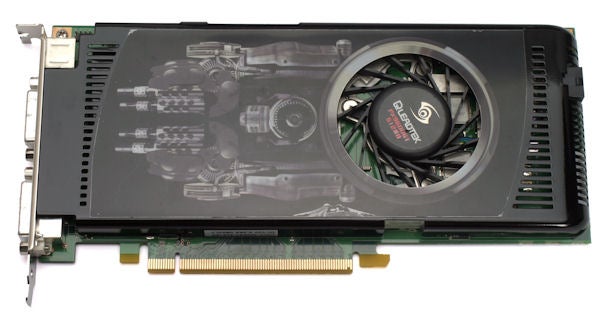
If none of that really means anything to you then think of it like this. The stream processors are like the inner workings of a car manufacturing plant. The combination of people and machines can churn out a finite number of cars per hour at any particular quality level. So, if you want small cheap cars you can get 20 an hour or if you want beautiful handcrafted works of art you can only get one an hour. It’s the same with all those in-game graphics settings – if you turn them all up you get a higher quality end product but it takes longer to produce.
Now, think of the ROPs and memory bandwidth as the delivery services that come and go from the factory. If the delivery trucks don’t drop off enough supplies or take away enough completed cars, the factory grinds to a halt. So, you need the trucks to be coming and going at least as fast as the factory is producing. However, go too much faster than needed and you end up with trucks making wasted trips, which is the situation the 9600 GT finds itself in. If you turn in-game details down, the card can crank out the frames because of the higher memory-bandwidth and number of ROPs (faster trucks) but if you turn the details up the shader’s can’t keep up (trucks making wasted trips). 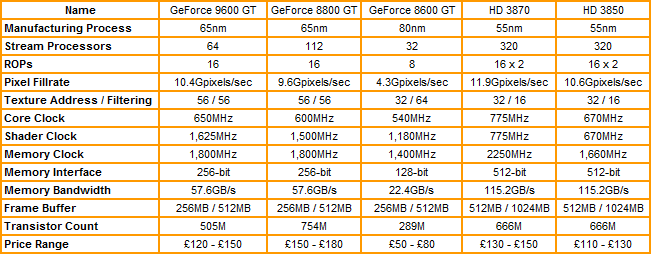
Anyway, that’s quite enough of that analogy. Just know that while performance may by impressive in older games, the card may struggle as more and more shader-heavy games are released.
Elsewhere the card offers the same HD video capabilities as the rest of nVidia’s latest cards but due to a recent driver improvement nVidia is now offering a number of new video post-processing techniques – called Dynamic Contrast Enhancement and Dynamic Blue, Green, and Skin Tone Enhancements – that leverage the huge processing power of all those stream processors to improve video quality. There’s also support for dual-stream decoding, which enables you to accelerate two videos at the same time. As a result of this, you can now watch HD movies without Aero being disabled.
The card we received for review is made by Leadtek but, as is often the case at launch, it is exactly the same as the reference design except for a different sticker on the cooler. Leadtek do offer an Extreme edition of the card, which comes factory overclocked to 670MHz/1800MHz core/memory, but we received the standard clocked version so, to all intents and purposes, we’ll be treating it as a reference card.
The dimensions of the 9600 GT are exactly the same as the 8800 GT with it measuring a full 228mm. Considering the lower power of the card, it’s a shame nVidia couldn’t have shrunk the card a bit but this is hardly something to dwell on. 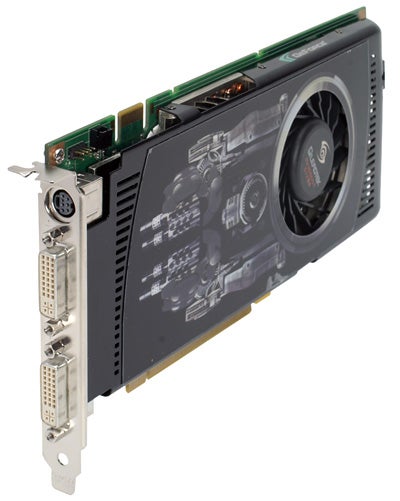
The cooler design has been tweaked slightly from that of the 8800 GT and a larger fan is being employed. The fundamentals are the same though, with the fan sucking in air and blowing it across the heatsink towards the back of the card. We have already raised concern about the single slot design on the 8800 GT potentially leading to overheating as it doesn’t actually expel the hot air it creates – it just blows it back into your case. However, having ample ventilation in your case should eliminate this concern.
The standard display output configuration is that of two dual-link HDCP enabled DVI connections, so you can watch copy-protected HD movies without any problems, and a seven-pin analogue TV-out port. The former of these enables you to use DVI-to-VGA and DVI-to-HDMI dongles to connect to any monitor, old or new, while the latter provides S-Video and, with the help of a dongle, component and composite output for old TVs. Also, DisplayPort and HDMI are now natively supported so in the future we may be seeing partner cards with these outputs onboard.
New to the 9600 GT is a standard connection point for a S/PDIF digital audio cable that can be used to take the audio signal from your sound card and pipe it out through HDMI or DVI (via a DVI-to-HDMi dongle). It’s still not quite as elegant a solution as ATI uses on its 2000- and 3000-series cards but at least the connection is now standard. 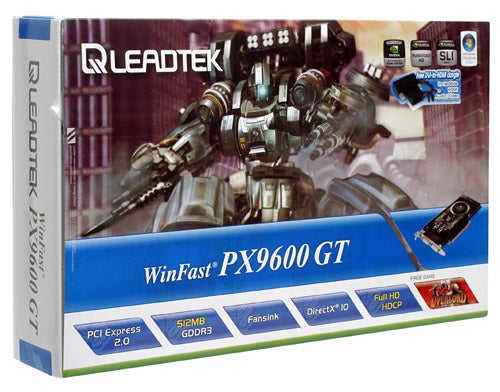
To accompany this new feature, Leadtek now includes a DVI-to-HDMI converter in the box, as well as the required S/PDIF cable, a DVI-to-VGA dongle, and a TV-out cable. So, unless you have an exotic multi-monitor setup, there’s everything you need to get going right out of the box.
Leadtek are also bundling the game Overlord with its cards, which is an added bonus. It’s not the most up to date game but we gave it a reasonable 8/10 and, as we’ve said before, if you want fancy extras you going to have to pay for them and bearing in mind the price the Leadtek PX9600 GT is selling for, you certainly aren’t paying a premium for the game.
Finally, the warranty on this card is only two years, which is much lower than the ten years some other partner boards come with. However, with the way computer graphics progresses, two years is a fair lifetime for a graphics card so this shouldn’t overtly put you off.
We put the 9600 GT through its paces using our usual selection of games and we’ve compared it against all the competitors at this price range. Each game is tested at a variety of resolutions and anti-aliasing settings and the tests are repeated three times to ensure an accurate figure is obtained. Once three stable figures have been achieved we average them out and report that number to you.
We have used alpha blending to smooth edges of semi-transparent textures, where appropriate, and kept all in-game settings at their maximum to ensure we are getting the best video quality possible. All except Crysis, that is, which we’ve run with everything set to High, as opposed to Very High, as the latter produces unplayable framerates. 
Considering the stiff opposition, the 9600 GT actually slots in rather well in terms of performance. It is comfortably below the 8800 GT and more often than not it finds itself ahead of the HD 3870 and HD 3850. Those claims of double the performance of the 8600 GT are also holding up and were it not for the points we made earlier this would be very impressive stuff. 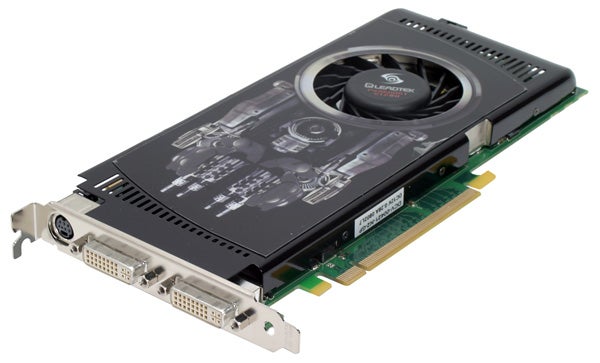
Now, there was much ado yesterday when the 9600 GT first launched as retailers seemed to be charging rather over the odds for this new card (no doubt looking to cash in on the rush), which put rather a large dent in the value of the card. And, considering the competitiveness of this segment of the market a small fluctuation in price makes all the difference.
However, currently this Leadtek card can be had for £129, which is bang on the money and we’d recommend it based on that price. If, however, you’re looking at the factory overclocked cards that cost £150 then you’re getting very close to 8800 GT and HD 3870 territory and we’d suggest you save just a little more for the latter cards.
”’Verdict”’
nVidia can’t do much wrong in the discrete graphics card market at the moment and the 9600 GT is a perfect example of why. It has all the features you need and plenty of performance to boot. Just make sure you don’t spend over £130 on one, though.
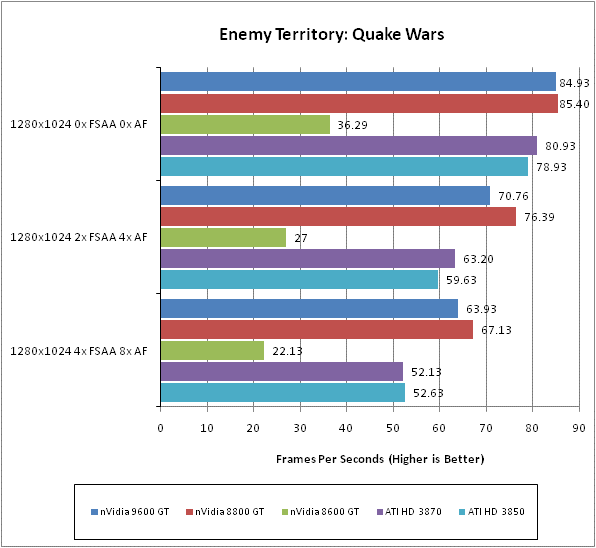
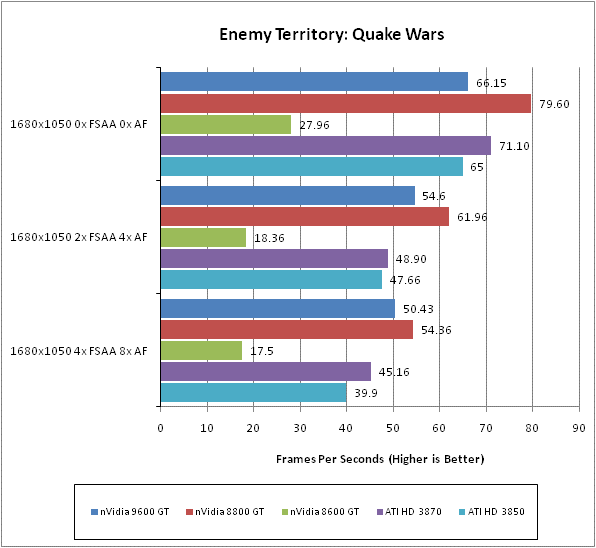
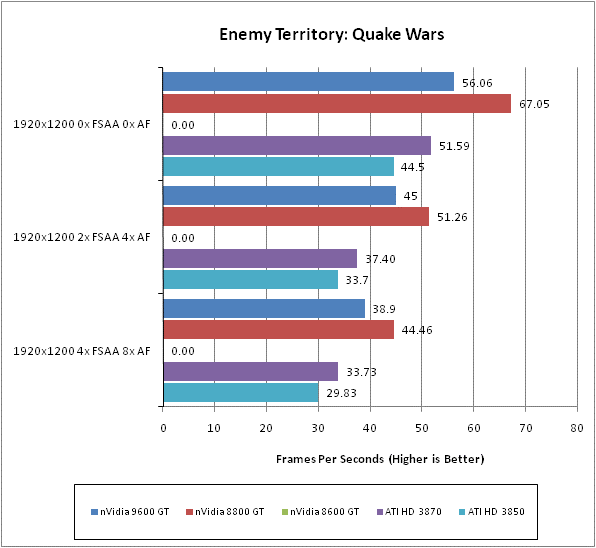
—-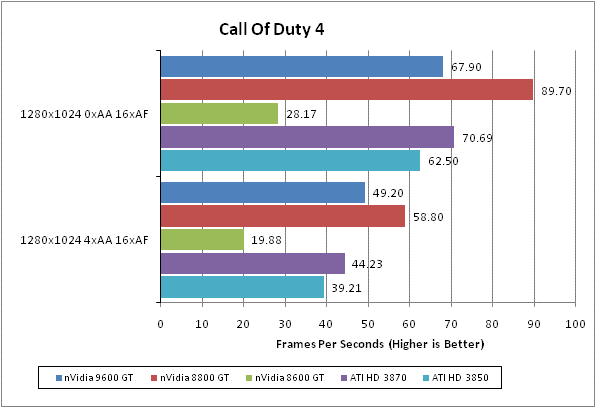
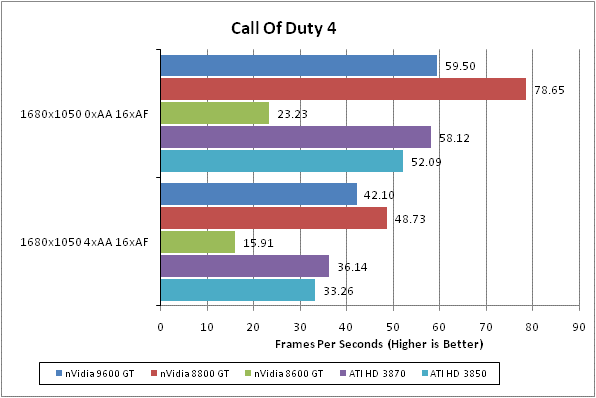
—-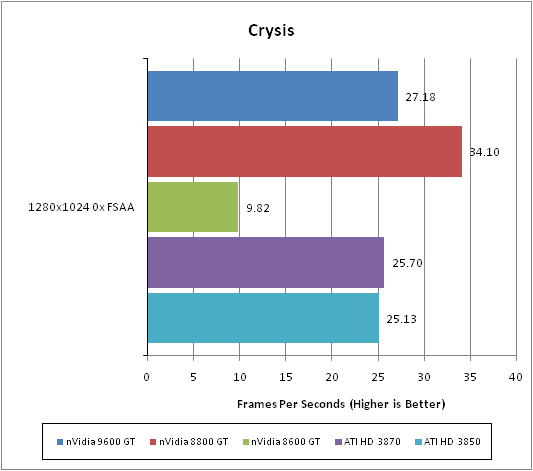
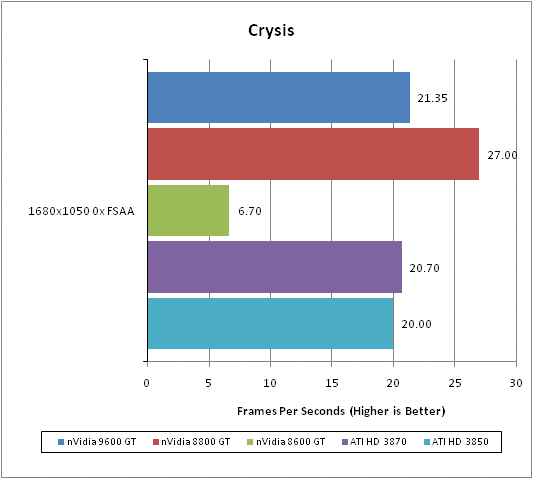
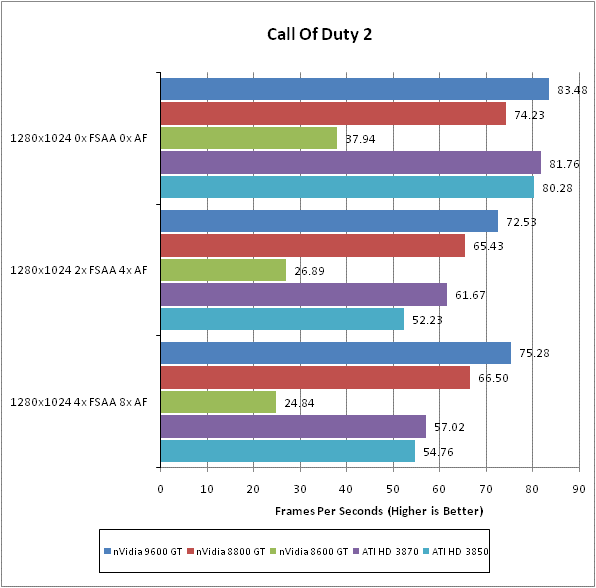
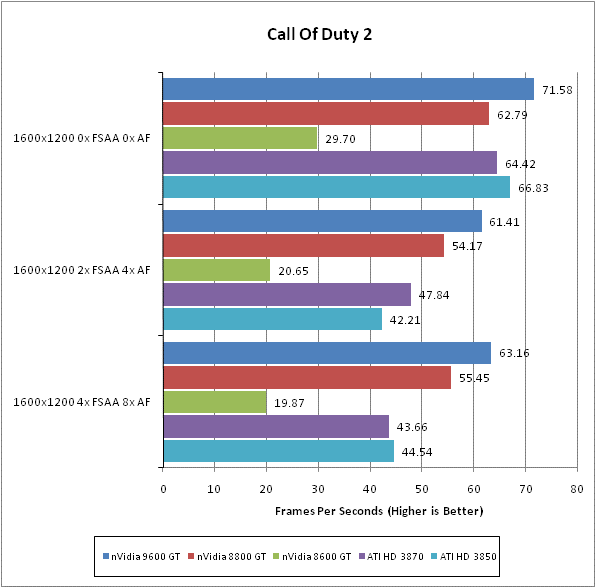
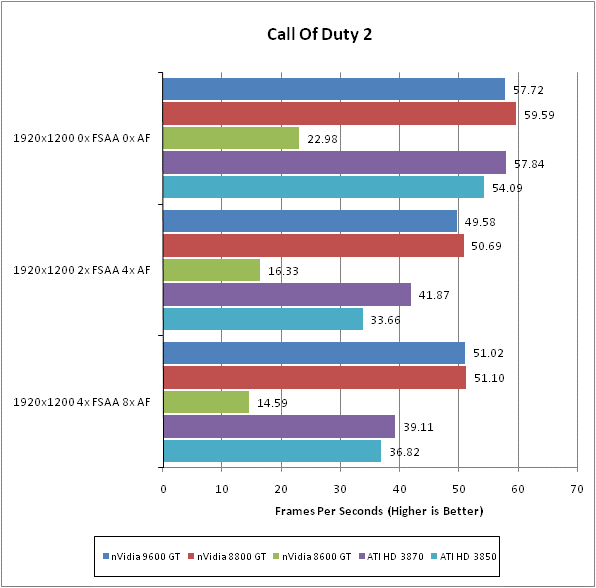
—-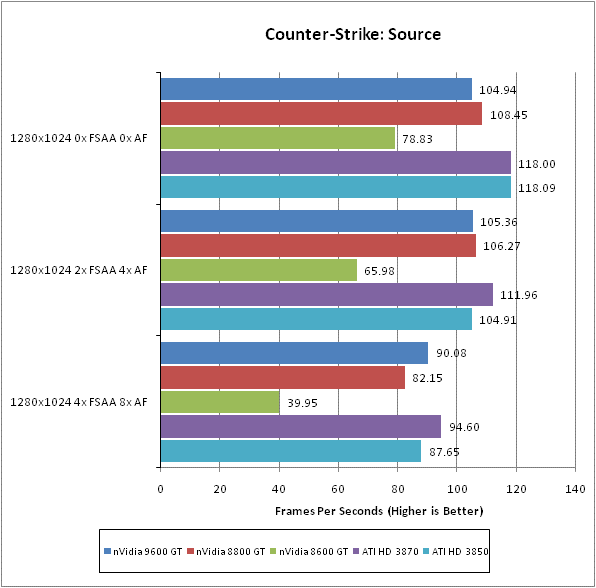
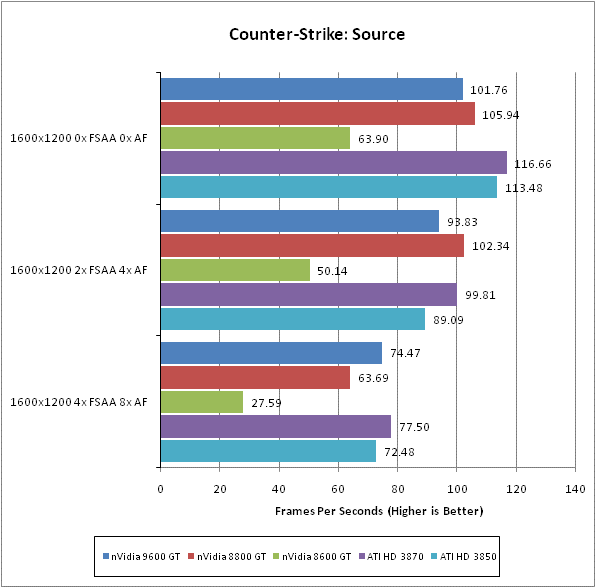
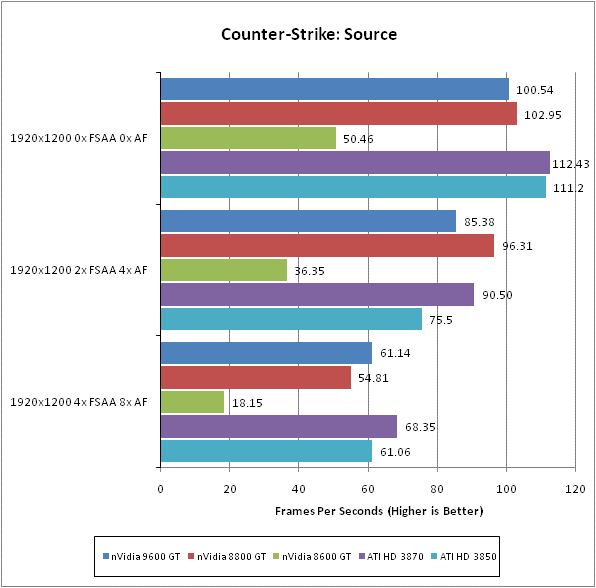
Trusted Score
Score in detail
-
Value 8
-
Features 9
-
Performance 8

